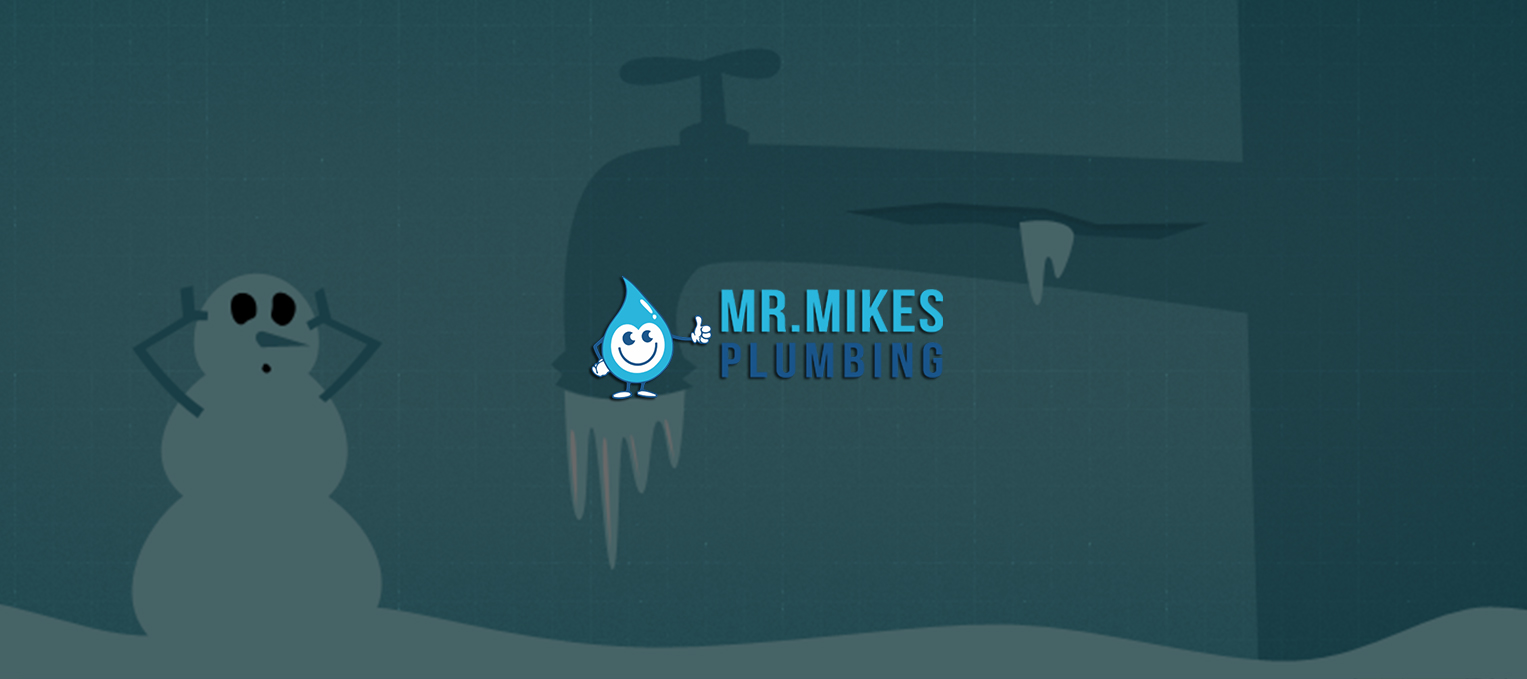
Water systems
February 12, 2017
Pipe leaks Calgary
February 13, 2017The freezing of water in pipes is due to too long an exposure of the water in the pipe to a temperature below 32° F. It is to be noted that both time and temperature are factors in the freezing of pipes, because it takes time to remove sufficient heat from the water and its surroundings.
Plumbing will sometimes pass through severe cold snaps without freezing, whereas a milder temperature of longer duration, possibly accompanied by high winds, will have a more serious effect.’ Unfortunately when water freezes it expands with a force which cannot be resisted by any pipe manufactured. Water expands on freezing about one-twelfth of its volume, i.e. 12 cu. ft. of water will become 13 cu. ft. of ice. This increase in volume usually causes the bursting of the pipe.
The occasional failure of pipes to burst on freezing is explained by the conditions under which freezing has taken place. In order to burst a pipe the freezing water must be confined. If there is no confinement the expanding ice pushes along the pipe without damage. This will explain why a pipe in a warm place may burst when freezing occurs in the basement. The expanding ice exerts a high pressure which finds the weakest spot in the line. This may not be near the seat of the trouble. There is no value in trying to thaw a pipe by heating it near the point of bursting. The pipe must be thawed where the ice has formed.
The freezing of pipes can be avoided by locating them in inside partitions and in other warm and protected places; by keeping the building warm when water is in the pipes; and by draining the water out of the pipes if the building is not to be heated. Covering the pipes with materials which conduct heat poorly is of great aid. Such materials as hair felt, wool felt, magnesia, cork and sawdust are suitable. Mineral wool has proven unsatisfactory because it packs and disintegrates.
The thawing of frozen pipes is accomplished by the use of gasoline torches applied to the bare pipe where it is frozen; wrapping the pipe in rags and pouring on hot water; blowing steam on the pipe; and in other ingenious but usually messy ways, or by the use of electricity which is certain, quick, neat, and inexpensive. In any process of thawing care should be taken not to crack the pipe by too sudden application of intense heat. During the process of thawing the pipe should be left open to start a flow, of water as soon as possible. A strong flow of water will remove ice more rapidly than the ordinary application of heat.
Thawing frozen pipes by electricity requires that sufficient current (amperes) be forced through the pipe to raise its temperature above the freezing point. The amount which the temperature is raised depends only on the amount of current flowing (amperes, not volts) and the cross-sectional area of the pipe or, in other words, the resistance of the pipe per foot of length. A current of 100 amp. will heat 1,000 ft. of H- in. pipe just as rapidly as it will 10 ft. The difference is that it will require one hundred times as much voltage to force 100 amp. through 1,000 ft. as it will to force the same current through 10 ft. of pipe, and the power used varies accordingly.
It has been found by test that for thawing ordinary house plumbing, consisting mainly of 3/8- to 3/4-in. pipe, there should be available a current of 100 to 200 amp. at from 3 to 10 volts, the higher current (amperage) being used on the larger pipes regardless of length and the higher voltage being required for the longer runs regardless of size.
The current used may be safely carried by the ordinary house wiring. The cost of power is very small, as the time of thawing is usually short.
Using the full rating of the transformer for 6 min., which is more than has ever been required in any of the tests, would use only 2 cts. worth of power at the ordinary rate of 10 cts. per kilowatt hour. The dangers of operation are no more than using a flatiron or an electric fan. The transformer may be plugged into the electric circuit by an extension cord just as is any other electrical appliance. The voltage on the secondary side is entirely harmless. It is so low that a good coat of paint or enamel will prevent its flowing from or into the pipe, and the hands may be safely laid across the terminals and no sensation of shock experienced.



